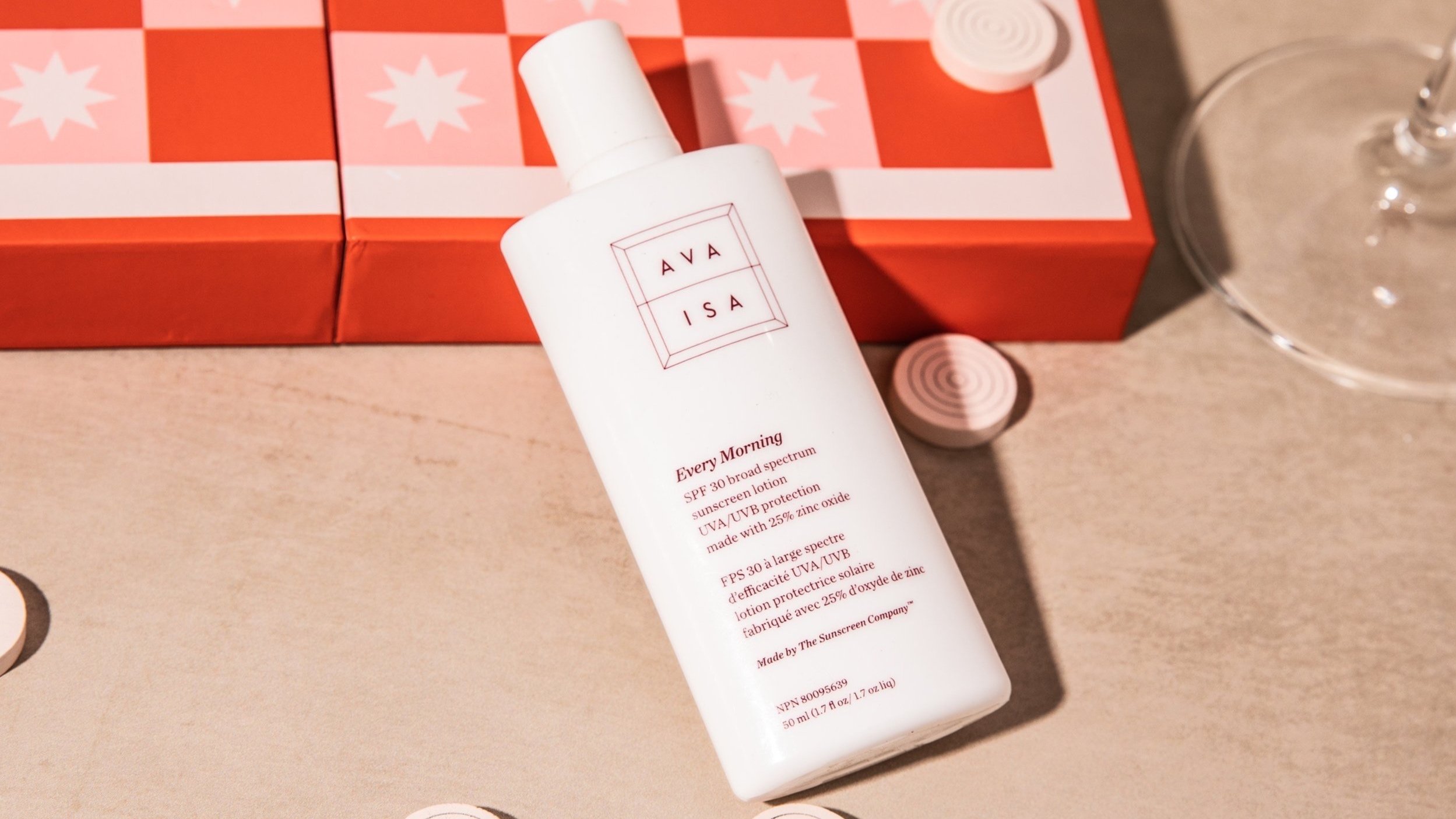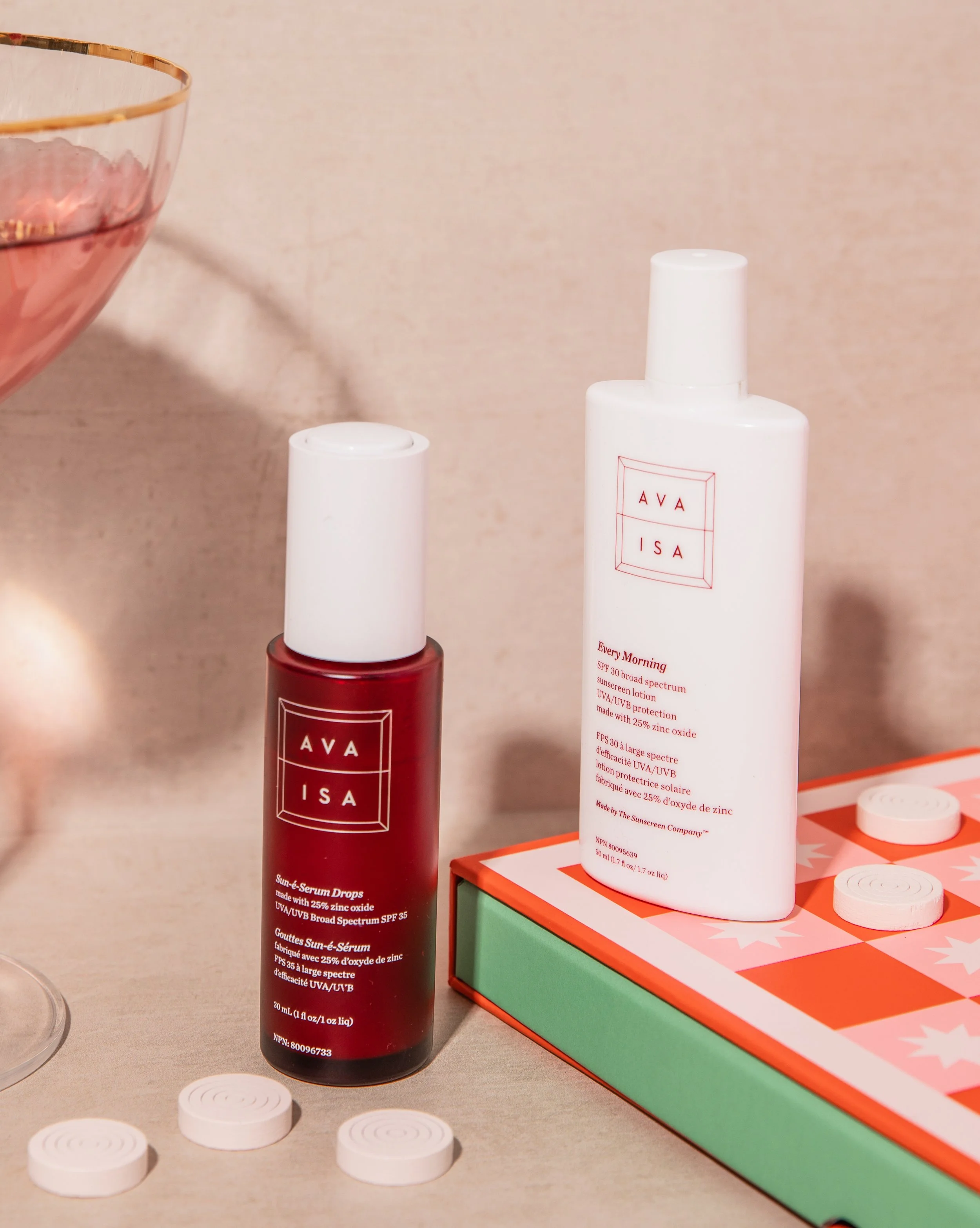Best Face Sunscreen for Perioral Dermatitis
What is perioral dermatitis? What are common triggers?
What skincare should you avoid?
Which type of sunscreen is best? ‘Chemical’ versus mineral sunscreens
What other sunscreen ingredients should you avoid
Reviewed by Dr. Sharyn Laughlin, Board Certified Dermatologist with over 40 years of clinical practice and co-founder of The Sunscreen Company
1. Introduction: What is perioral dermatitis? What are common triggers?
Perioral dermatitis is commonly mistaken for a rash or rosaceous acne and occurs around the mouth, nose and around the eyes (periorbital dermatitis). It can be red, flaky/scaly, in the form of papules that look like acne. Consumers often mistake it for acne and will use skincare with strong actives like retinol, AHA’s etc. Some physicians can confuse it with seborrheic dermatitis or eczema and mistreat it with steroids. Dermatologists are still unsure about what the root cause is- and whether it’s some form of overgrowth of the skin’s microbiome. Overuse of steroids (both topical and inhaled) is a common trigger alongside fluoride or fluorinated toothpaste, certain chewing gums etc.
If you’re struggling with perioral dermatitis, sunscreen can either make things worse—or calm your skin. Choosing the right sunscreen is critical.
👉 That’s why we developed our Ava Isa mineral sunscreen: ultra-light, soothing, and free of common irritants that worsen PD.
2. What skincare should you avoid?
Stop any form of steroid (both topical and/or inhaled nasal sprays). In terms of general skincare, discontinue all AHA’s, BHA’s, Vitamin A including Retinoids, Retinol, Bakuchiol etc. Avoid cleansers with strong surfactants and instead look for a very mild facial cleanser with no active ingredients. Avoid any skincare with fragrance or essential oils and occlusive ingredients like mineral oil, petrolatum etc. Some physicians prescribe treatments used for rosacea like Metrogel (metronidazole, a type of topical antibiotic) and oral antibiotics (tetracycline). Most dermatologists will advise you to use the most basic skincare possible, while your perioral dermatitis is flaring. When it has calmed down, introduce one product at a time to see which is well tolerated.
Since perioral dermatitis thrives on irritation, every product matters. Most chemical sunscreens contain potential triggers like fragrances, actives, or alcohols. This is why dermatologists recommend sticking to the simplest, most gentle products possible—including your sunscreen.
👉 Our Ava Isa SPF 30 is formulated without fragrance, alcohol, salicylates, or irritating actives—so you can protect your skin without flare-ups.
3. Which type of sunscreen is best? ‘Chemical’ versus mineral sunscreens
Since the skin can be very inflamed, itchy and sore most people find that a mineral sunscreen will suit their skin better than sunscreens that contain conventional organic ‘chemical’ UV filters. Many of these organic ‘chemical’ filters are sensitizing and the most common contact allergens, which is why mineral sunscreens get billed as best for those with sensitive skin. They are safer for all consumers as they do not enter blood. They are the most protective providing the best UVA protection available, by using 25% zinc oxide. The zinc oxide contained within mineral sunscreen is considered anti-inflammatory as well.
Chemical sunscreens → higher risk of irritation, allergic reactions, and barrier disruption
Mineral sunscreens → anti-inflammatory zinc oxide, best UVA/UVB protection, safe for sensitive/eczema-prone skin
👉 “This is exactly why our Ava Isa Every Morning SPF 30 was designed—with 25% zinc oxide in a lightweight formula safe for daily wear.
“Aside from perioral dermatitis, mineral sunscreens are beneficial for sensitive or eczema prone skin in general.”
4. What other sunscreen ingredients should you avoid?
Avoid spray sunscreens that contain alcohol (especially high concentrations where it’s the 1st or 2nd inactive ingredient). Many people with perioral dermatitis complain that sunscreens containing niacinamide can also be irritating or sensitizing. Avoid any sunscreens that have skincare ‘actives’ like Vitamin C, Vitamin A (e.g. retinyl palmitate). Avoid sunscreens with salicylates (related to salicylic acid) like butyloctyl salicylate or tridecyl salicylate as these can be hidden in inactive ingredient lists even for mineral sunscreens, and be contained in relatively high concentrations. Avoid fragrances and essential oils and overly occlusive feeling products. Ideally, a lightweight moisturizing sunscreen with 25% oxide like our Ava Isa Every Morning SPF 30 will pull double duty during the day as your hydration and SPF and reduce the number of daily products required.
Many so-called ‘mineral sunscreens’ sneak in sensitizers like niacinamide, butyloctyl salicylate, or fragrance oils. Always read the ingredient list carefully. Both of our Ava Isa all-mineral formulas are free from all of these hidden triggers, so you can apply daily with confidence.
At The Sunscreen Company, we love to offer the best in continuing skincare and sunscreen education, so make sure to follow us on IG @thesunscreencompany.


